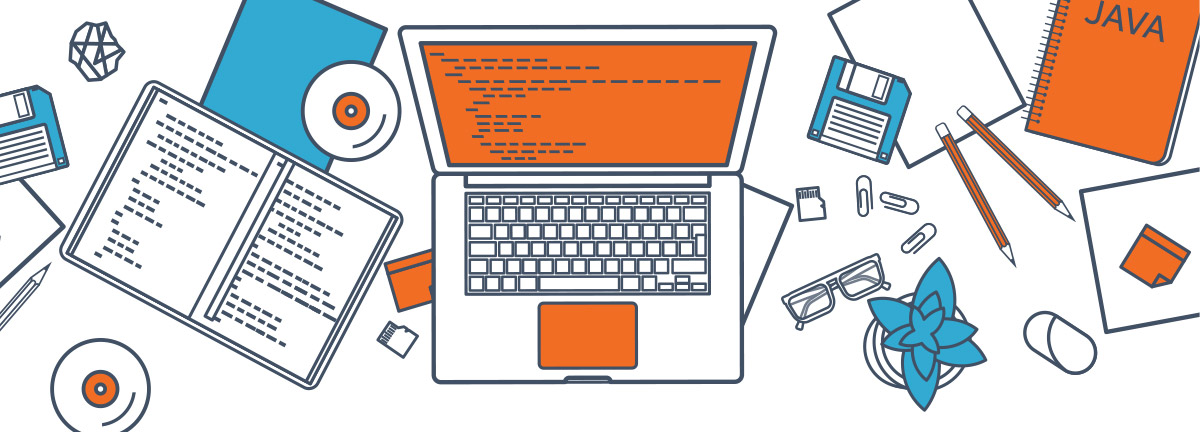With primary school kids learning coding as part of their curriculum, can you really afford to be left behind with no knowledge of programming languages?

Jump ahead 10-20 years and basic programming knowledge will become a commodity – knowledge that is accepted by society as part of our day-to-day interaction and communication. As it is, free platforms like CodeAcademy and movements like Girls Who Code are paving the way for this knowledge to infuse into different segments of the community at very little cost.
So where can you start? HTML5 is the latest version of Hypertext Markup Language comprising of three kinds of code – HTML which builds the structure, CSS which codes the aesthetics of the page and JavaScript which is a programming language that is meant to make webpages interactive. Meant for building web pages, HMTL5 has also garnered success with game developers by leveraging on mobile phone and tablet use.
Learning basic programming and the main languages (e.g. HTML, Javascript) is definitely one of the ways you can ride the movement and make sure you stay afloat. But how can you keep yourself at the top of the game, ranked ahead on the leaderboard?
Keep close tabs on upcoming programming language to give yourself a head start when the prevalent programming language loses relevance. Having designers in your team who are multilingual and can code in different languages will also help to mitigate risk significantly in anticipation of trends in the current.
Here are our thoughts on programming languages to compete with HTML5:
Round The Clock Representative
For most businesses, the website is usually the first platform that customers visit to acquire information or get in touch with the company’s personnel. For consumers, the website is a quick and easy access point to get a sense of the business before investing time and effort to go down to a physical store or office.
By deploying a Chatbot, business owners can provide live support for their customers round the clock. Because of the immediacy of a response, it is easy to understand why consumers would prefer this platform of customer support over being put on hold over the phone for hours – for example, in the event of a technical glitch. Waiting for a response over email, which is highly dependent on working days and time zones, can generate more frustration in a situation that was meant for service recovery.
Used as a general-purpose programming language, PHP is a great tool for newcomers. With server-side scripting, the PHP codes are enclosed executed on the server. This means that your code is not revealed to the client who receives the end results of running the script.
With a large community already onboard with PHP scripting, the problems you face as a developer are likely to have existing solutions. This means free support, quick fixes and a steeper learning curve for new developers. To top it all off, the online manual is regarded as one of the best available.
As a widely used programming language, PHP is a quick and easy language for general use.
Python
Our next contender is an object-oriented programming language that rivals Ruby and Java. Python is equipped with a standard library that supports a variety of common tasks such as searching texts with regular expressions. ‘In Python, everything is an object,’ cited Brian Curtin, a member of the Python Software Foundation board of directors.
As a result of its object-oriented code, it’s also no surprise that one of the benefits of Python is that it’s fairly easy to read – supposedly requiring less effort to write as compared to C++ and Java.
With Google and Instagram among the users of Python, there is no doubt to the popularity of the platform – so this is definitely one you’d want to keep in your back pocket.
Ruby
Developed in Japan, the greatest strength of Ruby is that it supports multi-dimensional programming paradigms. This means you can use it as structured programming, construct object-oriented code or blend the two using closures.
This grants developers the flexibility while basing the framework on a simple structure that has clear syntax – allowing you develop quickly and efficiently. Similar to other languages, Ruby has its own repository with thousands and thousands of solutions for your programming problems.
With the likes of Twitter and Hulu on the platform, Ruby is a pragmatic tool, without overcomplicated features, which comes in handy when you’re just starting to get your hands dirty in developing.
Swift
Developed internally, Swift is Apple’s answer to a multi-paradigm language and has been picked up quickly by many iOS developers. It brings with it competitive features such as better type safety, memory management and multiple return values – intended to improve efficiency and reduce the developers’ time spent on coding.
Similar to the likes of Python and Ruby, Swift uses a friendlier syntax that is quicker to pick up, read and write. The selling point for the language however, as touted by developers, is the reduction in overall code length which was achieved by reducing repetition in much of the code.
There are a few things that the HTML5 rival languages have in common – easy to understand scripts that lower the barrier to entry for new developers, a strong community that can provide support at cost that is little to nothing and libraries and repositories to provide quick fixes. These key features can always be enhanced in creative and innovative ways with the onset of new languages – so keep a look out!
At Krome, we specialise in website design and development services. If you or your client are interested in creating a site, it’s time to tell us about your project or have a chat about what we can do. You can contact us here.